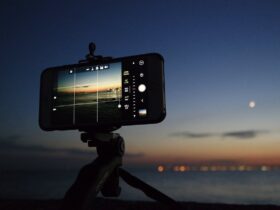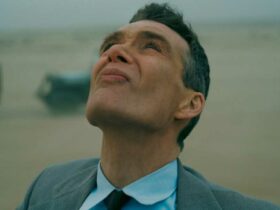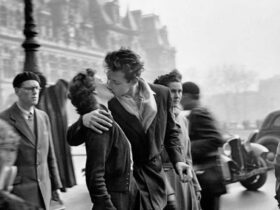We bring you an interview with Suxing Zhang, a photographer with a keen artistic eye who delves deeply into the images and emotions of the observer. His shots are particular, powerful and delicate. They almost look like paintings, masterpieces of modern art. In this piece we will try to reconstruct its history and its style
A category that represents a whole world at the Sony Awards is that Creativity where no limit is given to the photographer in the production and manipulation of his shots. This year the winner is called Suxing Zhang and we believe her shots are as powerful as they are particular. Today photography is used above all for storytelling: in newspapers to tell facts, in reportages to show lost places and moments and on social networks every day to document our life. But Zhang’s photography is different. It is an ethereal vision that proposes the photographic medium with an artistic and emotional declination. The goal is not to say something, but simply to excite. Don’t try to understand what you will see shortly, just live it.
ENGLISH VERSION AT THE BOTTOM
The story | Interview with Suxing Zhang
Tell us something about yourself.
I am a Chinese photographer based in Australia, who uses both analog and digital tools to create fine-art works. My works focus on conceptual portraits characterized by elements that express impressionistic surrealism. In addition to photographic skills, I also have experience in charcoal painting and drawing, which has significantly influenced the lighting, composition, color and texture of my photographic works.
Today you propose a visionary, modern and complex photography. But how did your artistic career start?
In fact, my artistic journey started with pencil and charcoal drawing. After a few years of learning and practicing, I was completely fascinated by painting. For a long time, painting and drawing were my favorite activities, with which I could spend days and weeks. However, for various reasons, I have not taken this path as a career. I went to university and studied architectural engineering in the UK, and in the meantime I also went to a summer school at Central Saint Martins to study interior design. In the first year after moving to Australia, I felt isolated and realized that I needed to communicate with this world in a non-verbal way that could integrate reality, imagination and feelings. It was then that I began my photography journey.
The style of some of his projects could be defined as “hyperphotography”, an enhanced photography. How did you come to this artistic style? What are you looking for?
First of all, I think that “classic portraits”, as opposed to “hyper-portraits”, are able to tell different stories. The reason for using additional ingredients to insert into the frames is to better control the emotional energy contained in the images. Instead of being narrative, I think my works are more emotional. Someone told me that my works are more about visual experiences than meanings, and I agree, mostly. What I’m really looking for through photography is a strong visual impact, both from an aesthetic and an emotional point of view. One way, or my way of doing it, is to use visual metaphors, through the combination of modern art approaches with the skills of classical photography. When I see my works, I hope that the public will be able to blend their subjectivity with the objectivity of photography, leading to different interpretations and emotions based on their own experiences.
Despite the original and particular choices, a trait common to all your shots is delicacy. Can you explain to me why?
I believe that this delicacy is linked to my workflow, which is significantly influenced by painting. When I’m in the studio taking these shots, I spend a lot of time finding the best compositions and poses until I’m satisfied; and during post-production, I also spend a lot of time refining the shot with the fencing-burn technique, studying the colors and tonal information of the images. Secondly, the delicacy can come from the posture of the models, which can be described as manneristic. Through the unnatural but aesthetic pose, together with the lighting and texture, I try to direct the audience towards the actual focal point of the images and to enhance the senses.
In your opinion, what allowed you to win the Sony Awards?
To be honest, I think luck plays a much bigger role than anything else. In the past, I have managed to win some international photography awards, while the same images have not been selected in other awards I have participated in. As you know, both objective measures and subjective preferences play an important role when evaluating different images. When it comes to this particular work, “Knot,” I imagine what caught the jury’s attention is the resonance of thoughts and feelings embedded in the simplicity of the composition of this fine art portrait.
The shots | Interview with Suxing Zhang
The best way to understand and learn from a photographer is to observe his shots. The story, the idea, the meaning of a shot can help us gain experience also to understand at a technical level how to react in different situations and above all how it is possible to recreate certain atmospheres.
Let’s start with Hua.
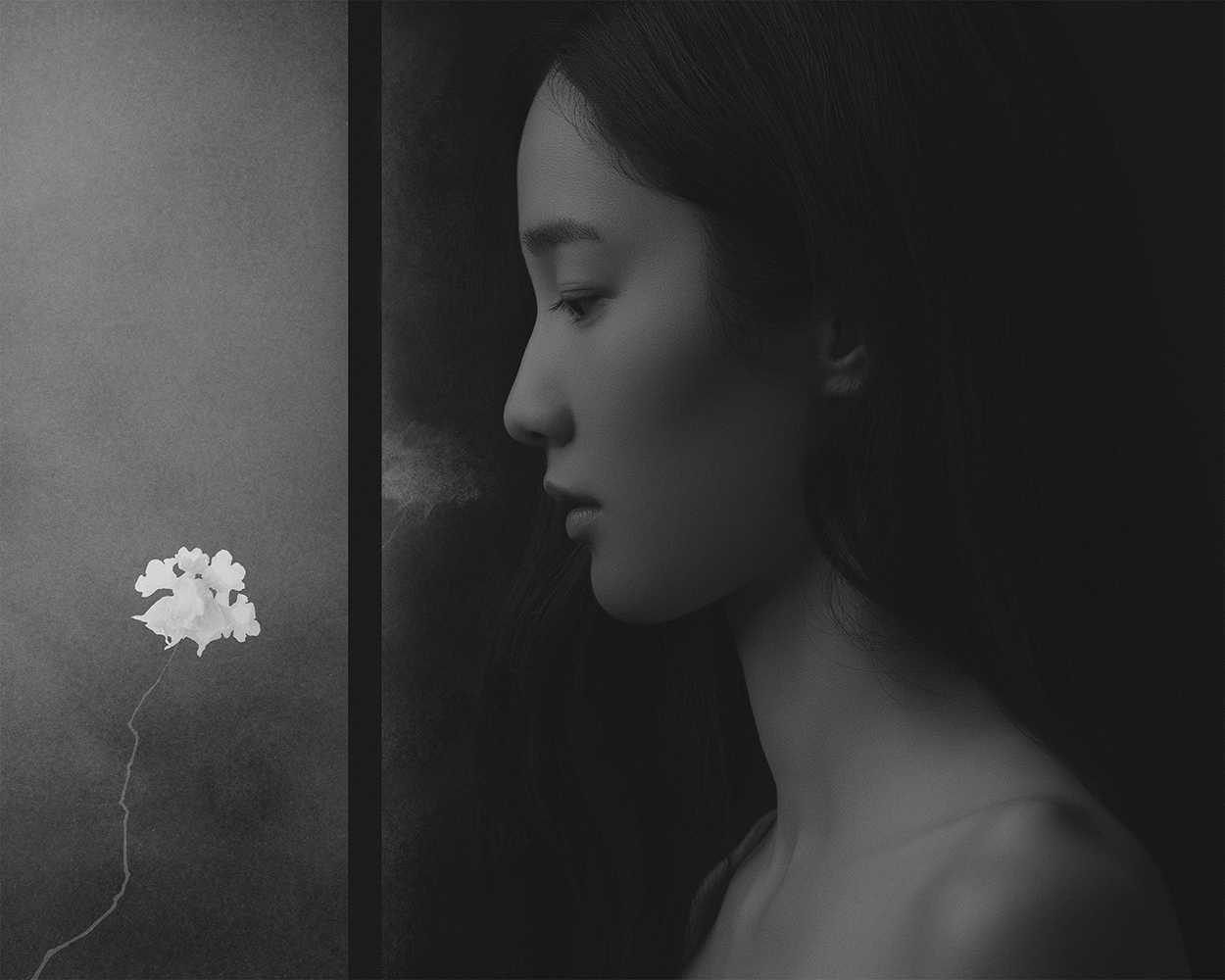
“Mirror”, © Suxing Zhang
Feelings and emotions have no physical attributes as they have no fixed forms and cannot be touched. However, what happens in our mind has a direct impact on physical behaviors. These feelings and emotions are vulnerable in a way that can be easily twisted or destroyed. Yet they are so strong, on the other hand, that they can blend into our bloodstream and control us. In this work I want to represent perception through the specular reflection, in a surreal way, it gives shape and visual consistency to abstract concepts – the flower. In addition to the sense of sight, in this image I try to stimulate something else, the sense of touch, obtained by applying a dense and dynamic texture.
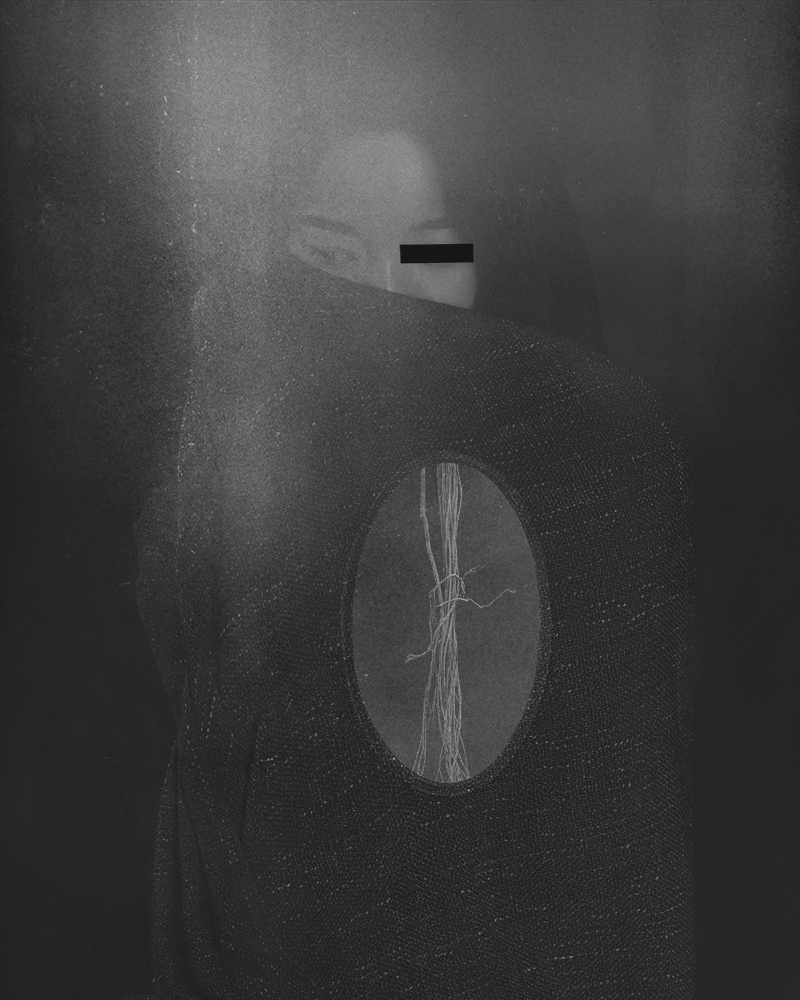
“Nodo”, © Suxing Zhang
In our life we all have moments when we are hurt by someone or something deep inside. These wounds may heal after a few years, while the scars remain present. “I have overcome it.”, Some of us think. The truth is, some of them may never get over them. When the wounds reopen in some circumstances, blood still oozes from the wounds and reminds us: they are still there. We never get over them, we just make peace with them. In “Knot”, I aim to minimize emotional energy by exploiting symbolic and metaphorical stimuli. When combined with lighting and texture, this work provides immediate, intuitive sensations, through which I hope the audience can see through their own internal nodes.
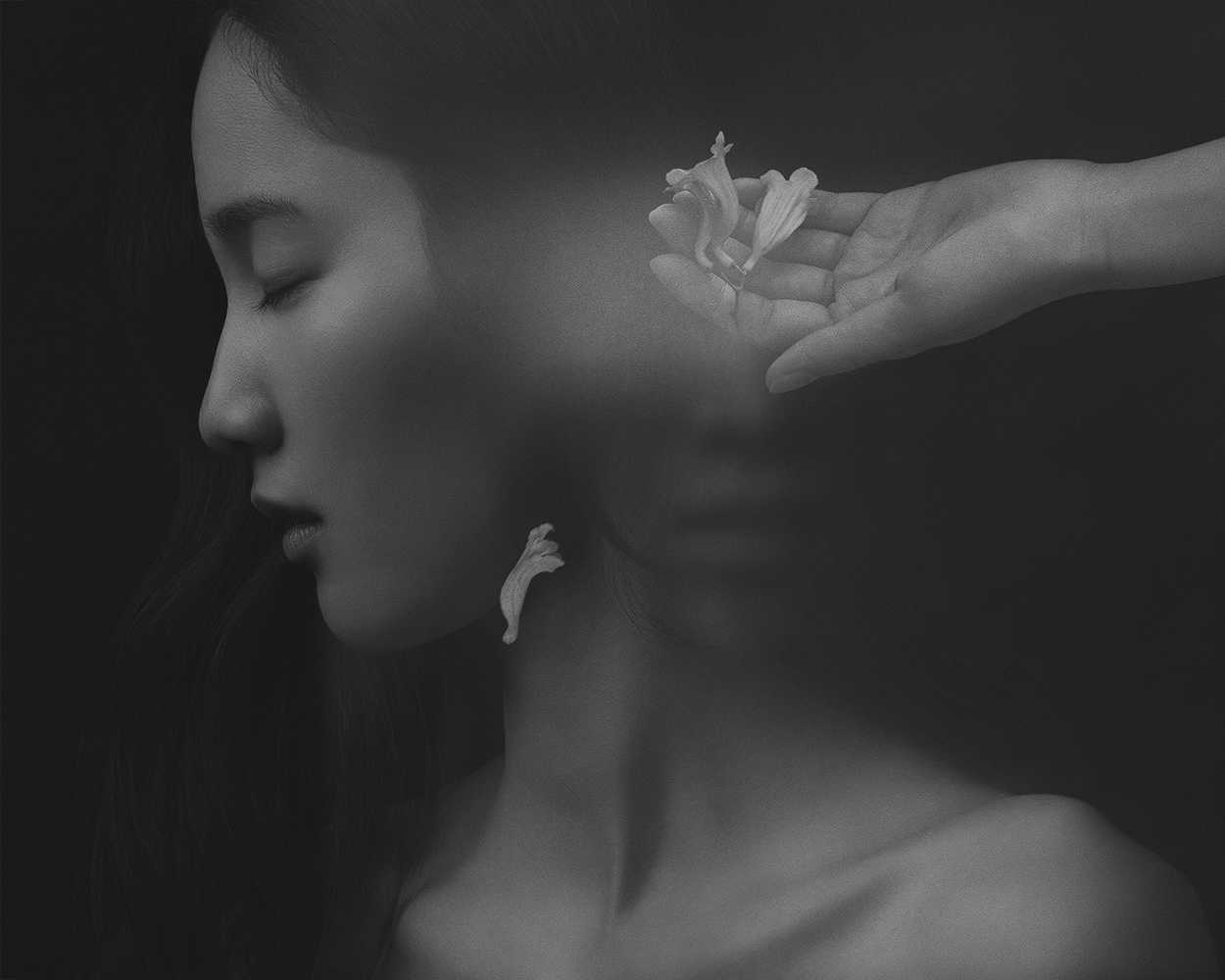
“Velo”, © Suxing Zhang
The work “Veil” explores the vulnerability of our true selves. I’m not sure what the veil is, the real face, the real face, the vague face, or both. And I don’t think there is a clear answer to this question. In this work I have made the face vague, barely hinted at by applying shielding and burning techniques on a dense texture. In other words, I have painted this face, so that it appears to be in an unstable state, ready to transform into another at any moment. Jacaranda’s hand and flowers reinforce the sense of insecurity and help focus the contrast between the different states.
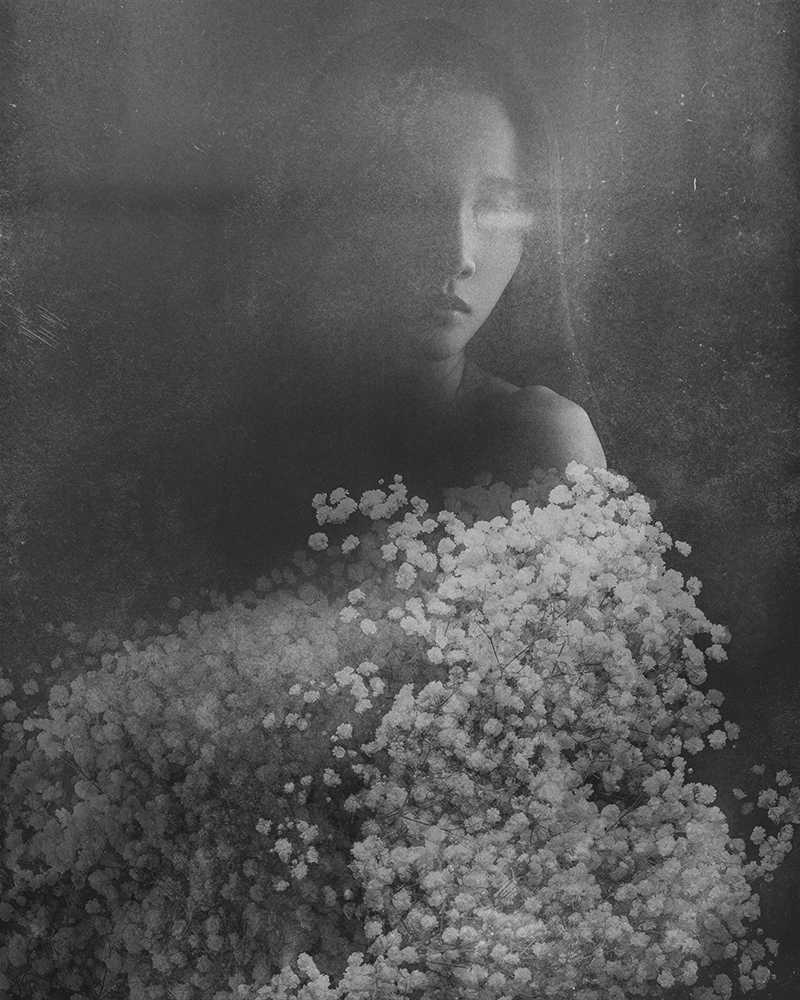
“Umbrella”, © Suxing Zhang
The Umbrella work is about feelings when you are in safe areas. Many of us have our own safe zones. And many consider safe areas to be comfortable and quiet areas. However, thinking from another point of view, having safe areas means that it is unsafe outside. Once these mental protections disappear, negative emotions arise like raging storms. In this work, this imbalance is presented through the unstable composition of the layouts as well as the unnaturally floating blooms of the gypsophila, reinforced by the rough structure.
Usually I tend to propose a technical analysis of the shots to our readers, I try to explain how a certain technique can be related to a certain emotional message. Here I refrain from doing this for two reasons. The techniques used are not too complex, but they are used in a hidden, creative and not at all immediate way to understand what and how it was used. This type of analysis would require a wider space that instead I would like to leave to your emotional intelligence, to let you be guided by the images on a journey within yourself. Trust that it is worthwhile for once to abandon the rationality of the technique.
This shot is very special. Simple in the same way. I would like you to tell us about it.
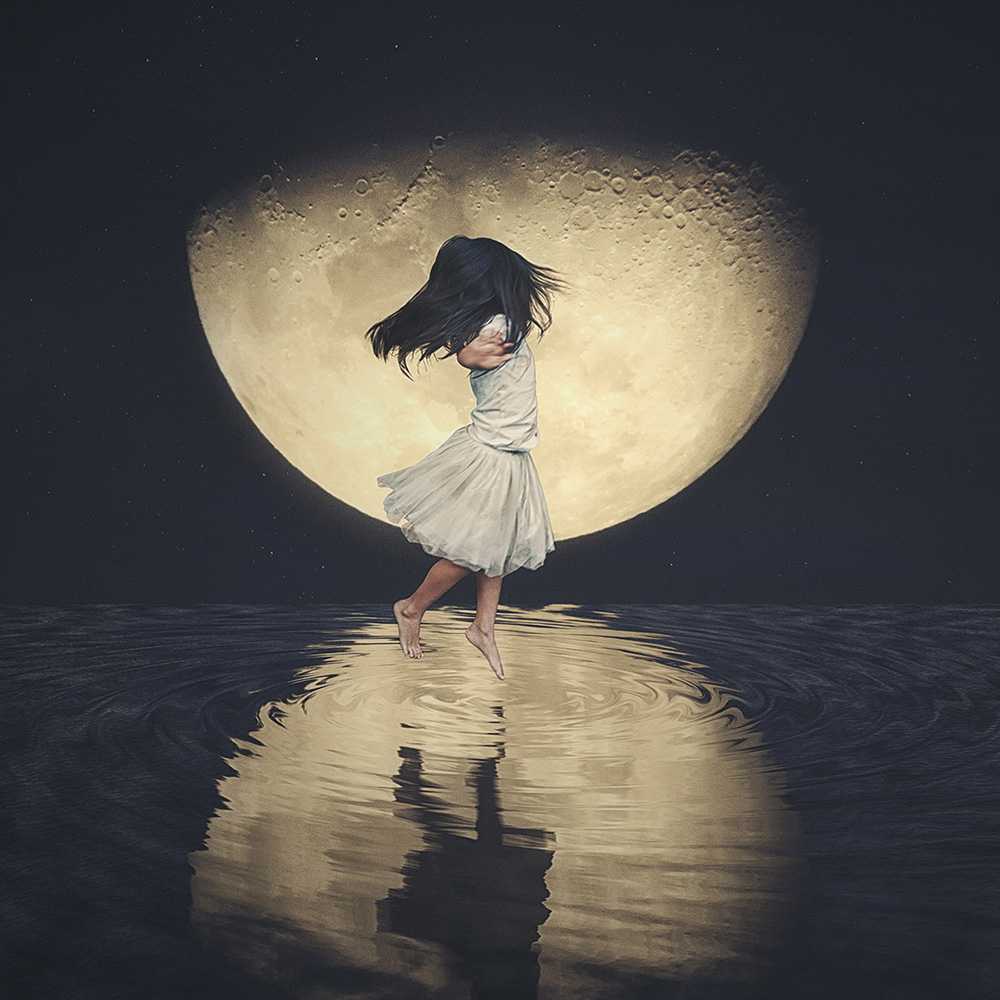
“Moonlight”, © Suxing Zhang
When we are young, the outside world is large, yet we imagine it to be small. Yet we enjoy the little little world that surrounds us. A small thing becomes big and time passes slowly. We are curious and ingenious, full of imagination. I wish things could stay the same, and we could stay the same when the world gets bigger. So I made this image, a little girl dancing in the moonlight.
We are faced with an image of childhood. The slightly cartoonish or comic style is a bit reminiscent of the world of childhood. Is the portrait of a little girl dancing under the full moon a banal image, simple to represent the concept of time that passes, inexorable? But I ask you another question: how many times will you see the full moon? Ten? Twenty? Not many more. Here, this is perhaps the essence of the shot.
Now I wish you were the one to choose a shot, a shot that you think should be shown.
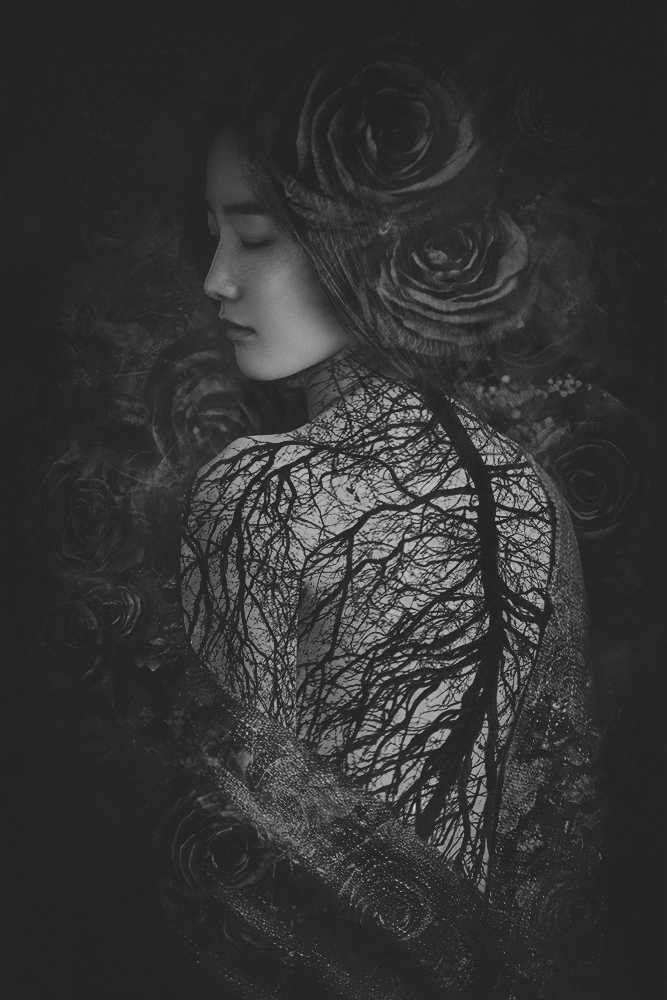
“The girl in the roses”, © Suxing Zhang
This work is very special among my other works. I think most of my works can be described as minimalist. And it’s true that I like to use the bare minimum for composition. However, this experimental, surreal portrait contains a lot of information. What I look for in this work are emotional reactions in a mixture of visual elements. In addition, I try to bring out different forms of life so that all the ingredients contribute to the overall harmony. The time I have devoted to this work is probably far greater than what I normally dedicate to an oil painting. To be honest, it was a painful process to go through and brush up on the little details. But the result is satisfactory – not completely – but I’m glad I did this job.
It’s not perfect editing, but life and emotions aren’t, after all. “The Little Prince” reminds me a lot of the story of this shot, do you remember the relationship of the prince with his rose? “It is the time you have wasted for your rose that has made your rose so important.” This shot contains all the passion and dedication of an artist to his work and his vocation.
I really hope these shots have thrilled you as much as they thrilled me, you can continue the journey by visiting the photographer’s official website. From the photography section it is …











